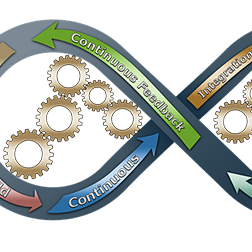Business Agility & Software Engineering Excellence
CASE STUDIES
Here's a peek into some Cutter client success stories.

TECHNICAL DUE DILIGENCE OF ACQUISITION TARGET
The Cutter Consortium team assessed the value of the target firm’s technical assets, including the technical ability and talent of its team, to help determine an appropriate bid and to identify risks and future costs. The team determined what could be salvaged from the target firm’s system and assessed the expected lifespan of the system from an operational stability perspective. Cutter Consortium consultants also assessed the current state and value of the target firm’s accompanying point-of-sale system. In addition, the Cutter consultants evaluated the technical abilities and talents of the target firm’s key team members. Cutter Consortium’s work included architecture and technical debt code reviews, via onsite and offsite efforts, as well as interviews with, and observation of, the team members. Among the deliverables were: assessment reports, addressing technical due diligence and technical debt; all supporting architecture and process documents; detailed team assessment; POS assessment.
Outcome: Cutter Consortium’s gap identification, along with risk ranking, remediation recommendations, and discussion of what the latter will involve in terms of level of effort, not only helped the client adjust its bid, but also provided valuable data to justify the asking price and terms.

A HARDWARE-CENTRIC ORGANIZATION LEARNS TO REALIZE THE VALUE OF ITS SOFTWARE
A leading organization in the Enterprise Asset Intelligence market had two goals: the first was to realize greater value from its software by shifting the mindset that the organization was hardware-centric; the second goal was to decrease time-to-market by increasing the efficiency of its product development teams. Cutter Consortium designed a program comprising three stand-alone engagements to help the organization achieve its goals and to foster widespread adoption of Agile practices.
The first engagement began with an executive overview on Agile product development delivered to the organization’s leaders resulting with buy-in from the executive team. During the second engagement, Cutter’s expert conducted a short readiness assessment designed to (1) understand the state of agile practices currently in place, and (2) get a feel for whether the rest of the organization was ready to adopt agile practices. Based upon the data from the assessment, Cutter developed and executed the third engagement: an Agile transition plan for the organization. Cutter’s expert began working with teams in three different locations — North America, India, and Taiwan — training nearly 1000 staff and partners, including both software and hardware engineers, in what it means to be Agile and how to do Scrum well. They learned technical practices that are now helping them improve quality, and they learned scaling patterns they can now use to build their complex systems. In addition, Cutter delivered specialized agile training sessions to business managers, product managers, and program-level managers, and coached project and program teams to prepare them for adopting agile at the program level.
Outcome: As a result of the significant effort put into getting all software teams (and many hardware teams) through the workshops, most are now practicing agile. Those not yet practicing agile understand what it is and what will be expected of them going forward. At the program level, Agile is now understood and is being rolled out. The organization is achieving its goal of weaving Agile practices into its fabric to increase efficiency and realize the value of its software.

TECHNICAL DEBT ASSESSMENTS AND VALUATION
Cutter Consortium was called into a software organization by its venture capital firm to conduct a Technical Debt Assessment and Valuation. The code to be evaluated had been acquired two years prior. Until the organization built the capability to develop the code in its US headquarters, the development had continued through an outsourcing company in another country. The assessment came just as the company was about to release ~200K lines of Java code. The Technical Debt Assessment successfully addressed three levels of concerns:
- Strategically, it reassured the VC firm and the organization's CEO that the code base was worth continuing to invest in.
- Tactically, it gave the CTO the tools and visibility needed to manage the code base on a day by day basis.
- Operationally, it enabled the development team to focus on improving quality in a "biggest bang for the buck" manner.
Moreover, the engagement gave the CEO the metrics required for effectively governing the software process and (re)aligning it with marketing and sales activities. As the CEO was not technical, the ability to get an aggregate dollar figure for "paying back" debt and plug it into the organization's financial models was of great value to him and to the company.
Outcome: Cutter consultants identified various deficits in the organization's software process. In particular, requirements management and program management were flagged as lacking in rigor. The Cutter consultants suggested various methodical improvements that would make a difference in future releases.

TRANSITION A LARGE ENGINEERING DEPARTMENT TO AGILE
Because its products (over 20) are all released at the same time as a suite, this international leader in workforce management software chose a group-wide strategy for transitioning its engineering department of 600 people (developers, QA staff, product managers, architects, etc.) to an agile organization, rather than an incremental one. Key focal points for the client were to improve product quality and team performance, as the complexity of their product line had increased dramatically over the past few years. After an extensive qualitative and quantitative assessment of the organization, we recommended an "agile lite" approach consisting of a blending of Agile Product Management & Software Engineering Excellence and Industrial Extreme Programming. The transition began with extensive training (An Agile Overview, Agile Product Management & Software Engineering Excellence, Agile for Product Management, IXP components for technical staff), assistance in chartering some 40 individual project teams, and several months of on-site coaching. Other recommendations implemented by the client addressed issues related to large integrated systems: frequent total integration, cross-team coordination, organizational changes, performance measurement changes, and multi-level release planning. Transition assistance was provided at all levels of the organization, from developers and QA staff to managers, directors, and the VP. The transition to agile and first product release following the transition were considered very successful by the VP of engineering.

ASSESSING THE TECHNICAL CAPABILITY & TALENT OF A TARGET FIRM’S TEAM
Cutter Consortium performed due diligence for an investment firm of a target company’s technical leadership and team. Cutter's software development, architecture, and security experts conducted individual interviews, group interviews, and performed sample code and artifact/work product reviews for the individuals being evaluated. Their assessment covered the PM Team, Backend Development Team, Mobile Development Team, as well as issues such as team dynamics and how best to grow the team. Deliverables included an Audit Report, including skill gap identification with analysis of any risks these gaps present, and recommendations regarding how the individuals, and team as a whole, can improve their skills to achieve higher performance.
Outcome: The results of Cutter’s assessment gave the investment firm the data it needed to understand the risks it was undertaking, how these could be mitigated, and the potential upside that improvements would bring.

TRANSITION TO AGILE DEVELOPMENT METHODS FOR SOFTWARE AND HARDWARE
The initial engagement with this international scientific instrument manufacturer was to transition their software development groups to agile methods. As the software transition showed significant success, Cutter helped implement agile practices in the hardware project teams as well. After several agile projects had been completed by this client, Cutter metrics consultants conducted a before and after analysis that showed overall (pre-agile versus agile projects): defects reduced by 83%, schedule reduced by 24%, costs reduced by 61%, and staffing reduced by 39%). For several software teams Cutter provided training, project chartering facilitation, and extensive on-site coaching for several months. Our experience has been that hands-on coaching is critical to a rapid and effective agile transition. Cutter also provided extensive project chartering facilitation, facilitation training, and agile project coaching for a half-dozen large hardware projects for this client. We assisted in adapting agile practices to their hardware environment and developing a phase-gate governance system that incorporate agile methods.

